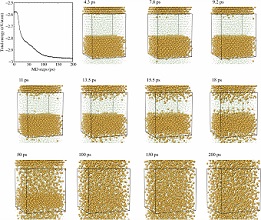- 著者
- 蔦谷 匠 安藤 康伸 飯田 有希 井上 志保里 貴舩 永津子 小寺 千絵 近藤 菜穂 猿谷 友孝 豊田 丈典 中村 史一 宮武 広直 渡邉 俊一 横山 広美
- 出版者
- 北海道大学 高等教育推進機構 高等教育研究部 科学技術コミュニケーション教育研究部門(CoSTEP)
- 雑誌
- 科学技術コミュニケーション (ISSN:18818390)
- 巻号頁・発行日
- vol.9, pp.23-34, 2011-06
Studies for iPS (induced Pluripotent Stem) cells are so important field for both basic science and regenerative medicine that they have attracted a great deal of attention and expectation from scientists, media and public. We revealed that unlike scientists, media and public had not paid attention to mouse iPS cell, the first achievement of the research, however, they were enthusiastic about human iPS cell. Our results suggest that the area of interest about iPS cells differed among scientists, media and public.
3 0 0 0 OA 大学院生出張授業プロジェクト(BAP) : 9年間の継続的活動を通じた分析と展望
- 著者
- 中島 悠 江崎 和音 菊池 結貴子 宮武 広直 安藤 康伸 生出 秀行 横山 広美 音野 瑛俊
- 出版者
- 北海道大学 高等教育推進機構 オープンエデュケーションセンター 科学技術コミュニケーション教育研究部門(CoSTEP)
- 雑誌
- 科学技術コミュニケーション (ISSN:18818390)
- 巻号頁・発行日
- vol.21, pp.59-75, 2017-06
大学院生出張授業プロジェクト(BAP)は,2008年に発足した学生団体であり,「高校生に研究の 魅力を伝える」「出張授業を全国の大学院生の文化にする」という2つの理念を掲げて活動を行ってきた.出張授業の実施先はメンバーである大学院生の出身高校を想定しており,これは大学院生・ 高校生の双方にメリットの存在する形態である.これまでの出張授業件数は129件,延べの受講者 は6,600人を超え,全国各地の高校で出張授業を実施してきた.東京大学大学院の全学から多様な 専門分野のメンバーが集まり,長年蓄積されたノウハウや,他分野の講師に対して行う高校生目線 でのアドバイスにより,授業を受けた生徒からの高評価を実現している.本報告では大学院生への 支援方法やこれまでの実施実績,生徒から得られたアンケート結果からBAPという形態の特徴を 考察すると共に,活動の継続と共に出てきた運営上の問題についても議論する.
- 著者
- 清水 康司 Elvis F. Arguelles 李 文文 安藤 康伸 南谷 英美 渡邉 聡
- 出版者
- 公益社団法人 日本表面真空学会
- 雑誌
- 表面と真空 (ISSN:24335835)
- 巻号頁・発行日
- vol.64, no.8, pp.369-374, 2021-08-10 (Released:2021-08-10)
- 参考文献数
- 39
In this paper, we report construction of neural network potentials (NNPs) of Au-Li binary systems based on density functional theory (DFT) calculations and analyses of alloying properties. To accelerate construction of NNPs, we proposed an efficient method of structural dataset generation using the symmetry function-based principal component analysis. We investigated the mixing energy of Au1-xLix with fine composition grids, which were achieved owing to the lower computational cost of NNPs. The obtained results agree well with the DFT values, where we found previously unreported stable compositions. In addition, we examined the alloying process starting from the phase separated structure to the complete mixing phase using Au/Li superlattice structures. We found that when multiple adjacent Au atoms dissolved into Li, the alloying of the entire Au/Li interface started from the dissolved region. These results demonstrate the applicability of NNPs toward miscible phase and provides the understanding of the alloying mechanism.
